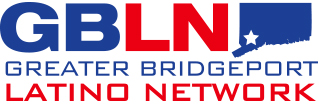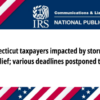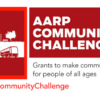What assistance is available to individuals and families?
Direct Payments Provides for immediate, direct cash payments to lower-and middle-income Americans of $600 for each adult and $600 for each dependent under age 17, beginning to phase out at an annual income of $75,000 for an individual and $150,000 for a household.
Eligibility requirements mirror those under the CARES Act (e.g., you must have a work-eligible social security number)
Corrects CARES Act language to authorize $600 for each citizen in a “mixed-status” family. Mixed-status families, where a U.S. citizen files his or her taxes jointly with a non-citizen, were ineligible for Economic Impact Payments under the CARES Act. These families can also now claim the original CARES Act Economic Impact Payment on their 2020 return in 2021.
Unemployment
Boosts Federal Pandemic Unemployment Compensation (FPUC) by $300 for 11 weeks.
FPUC is a federally funded weekly plus-up that is available to anyone receiving at least $1 of unemployment insurance
Extends Pandemic Unemployment Assistance extended for 11 weeks.
PUA makes individuals who do not qualify for regular unemployment compensation, like self-employed workers, independent contractors, and gig workers, eligible for assistance.
Extends Pandemic Emergency Unemployment Compensation for 11 weeks.
PEUC allows states to provide 13 additional weeks of unemployment benefits to individuals who previously received unemployment benefits but exhausted those benefits.
Provides an extra $100 (on top of $300) to “mixed earners” who earned income from both W-2 and non-W-2 jobs
Housing Assistance
Extends the eviction moratorium authorized under the CARES Act through January 2021
Provides $25 billion in rental relief funding
This money will be used to cover missed rent, utilities, and other costs accrued since the pandemic started
Funds will be funneled through a new program at the Treasury Department and intermediated by state and local agencies
To access the funds, renters will apply and state agencies will send payments directly to landlords
Landlords can also apply directly for assistance but will be required to notify the tenant that they are doing so and obtain the tenant’s consent
To qualify, households must meet these qualifications:
Have a household income of no more than 80% of the area median income (AMI) as defined by the U.S Department of Housing and Urban Development
have one or more members who can demonstrate a risk of homelessness or housing instability; AND
have one or more members who qualify for unemployment benefits or experienced financial hardship due, directly or indirectly, to the pandemic
Food Assistance
Increases SNAP’s monthly benefits for 6-months
Suspends work requirements for SNAP-eligible college students while work-study programs may not be operating during COVID emergency
Provides supplemental $400 million for The Emergency Food Assistance Program (TEFAP), which assists food banks
Provides an additional $13 million for Commodity Supplemental Food Program
Increases funding for “Meals on Wheels” by $175 million
What relief is available to small businesses and non-profits?
Paycheck Protection Program
Reopens the Paycheck Protection Program (PPP) with another $284.5 billion in funding.
Second Draw of PPP
The bill allows the hardest hit small businesses to obtain a second PPP loan. To qualify for another forgivable loan, an eligible business must have 300 or fewer employees and demonstrate at least a 25 percent reduction in gross revenues between comparable quarters in 2019 and 2020. Second draw loans are limited to $2 million.
Expanded PPP Eligibility
Certain 501(6)c non-profits, Destination Marketing Organizations, and housing cooperatives with 300 or fewer employees can receive funding, as can news organizations with 500 or fewer employees
Supports Payroll Expenditures
Borrowers receive full loan forgiveness if they spend at least 60 percent of their PPP second draw loan on payroll costs over any time period between 8 weeks and 24 weeks.
PPP Expansion for Restaurants
Eligible employers can take out loans equal to 3.5 times payroll, instead of the normal 2.5 times
Forgiveness Changes
Forgivable expenses now include supplier costs on existing contracts and purchase orders, the costs for perishable goods at any time, costs relating to worker safety, and technology operations expenditures such as software expenses. The bill also streamlines the loan forgiveness process for loans of $150K or less.
Deductibility for Expenses Paid with PPP Loan Proceeds
The bill clarifies that expenses paid with forgiven PPP loans are indeed tax-deductible. In addition, the bill clarifies again that forgiven loans do not count as income.
What support is available for businesses beyond PPP?
Support for Live Venues, Theaters, Museums, and Zoos
The package creates a $15 billion Independent Live Venue Operators Fund to provide grants to eligible live venue operators, theatrical producers, live performing arts organization operators, museum operators, motion picture theatre operators, or talent representatives that have experienced significant revenue losses. It directs the SBA to make grants to eligible venues equal to the lesser of either 45 percent of their operating costs from calendar year 2019 or $10 million. Recipients could use these grants to support payroll costs, rent, utilities, and PPE costs. Venue operators who receive a grant through the Fund cannot receive additional PPP monies.
Targeted Economic Injury Disaster Loan Advance Program
The bill appropriates $20 billion for the EIDL Advance program only for businesses in low-income areas, which are areas with poverty rates greater than 20% and median family incomes are 80% of the average for the state. These grants provide an emergency advance of up to $10,000 to small businesses and private non-profits harmed by COVID-19. The advance does not need to be repaid, and may be used to keep employees on payroll, pay for sick leave, meet increased production costs due to supply chain disruptions, or pay business obligations, including debts, rent and mortgage payments.
Employee Retention Tax Credit Modifications
The relief package builds on the CARES Act's employee retention tax credit (ERTC). The modifications will:
Increase the credit rate from 50 percent to 70 percent of qualified wages;
Expand eligibility for the credit by reducing the required year-over-year gross receipts decline from 50 percent to 20 percent and provides a safe harbor allowing employers to use prior quarter gross receipts to determine eligibility;
Increase the limit on per-employee creditable wages from $10,000 for the year to $10,000 for each quarter;
Increase the 100-employee delineation for determining the relevant qualified wage base to employers with 500 or fewer employees;
Allow certain public instrumentalities to claim the credit;
Remove the 30-day wage limitation, allowing employers to, for example, claim the credit for bonus pay to essential workers;
Allows businesses with 500 or fewer employees to advance the credit at any point during the quarter based on wages paid in the same quarter in a previous year;
Provide rules to allow new employers who were not in existence for all or part of 2019 to be able to claim the credit; and
Retroactive to the passage of the CARES Act, the bill allows employers who receive Paycheck Protection Program (PPP) loans to qualify for the ERTC with respect to wages that are not paid for with forgiven PPP proceeds.
As always, constituents may call our office anytime at 203-333-6600 and we will help them with federal matters, or refer them to the appropriate state agency.
View our full FAQ here: https://himes.house.gov/coronavirus










